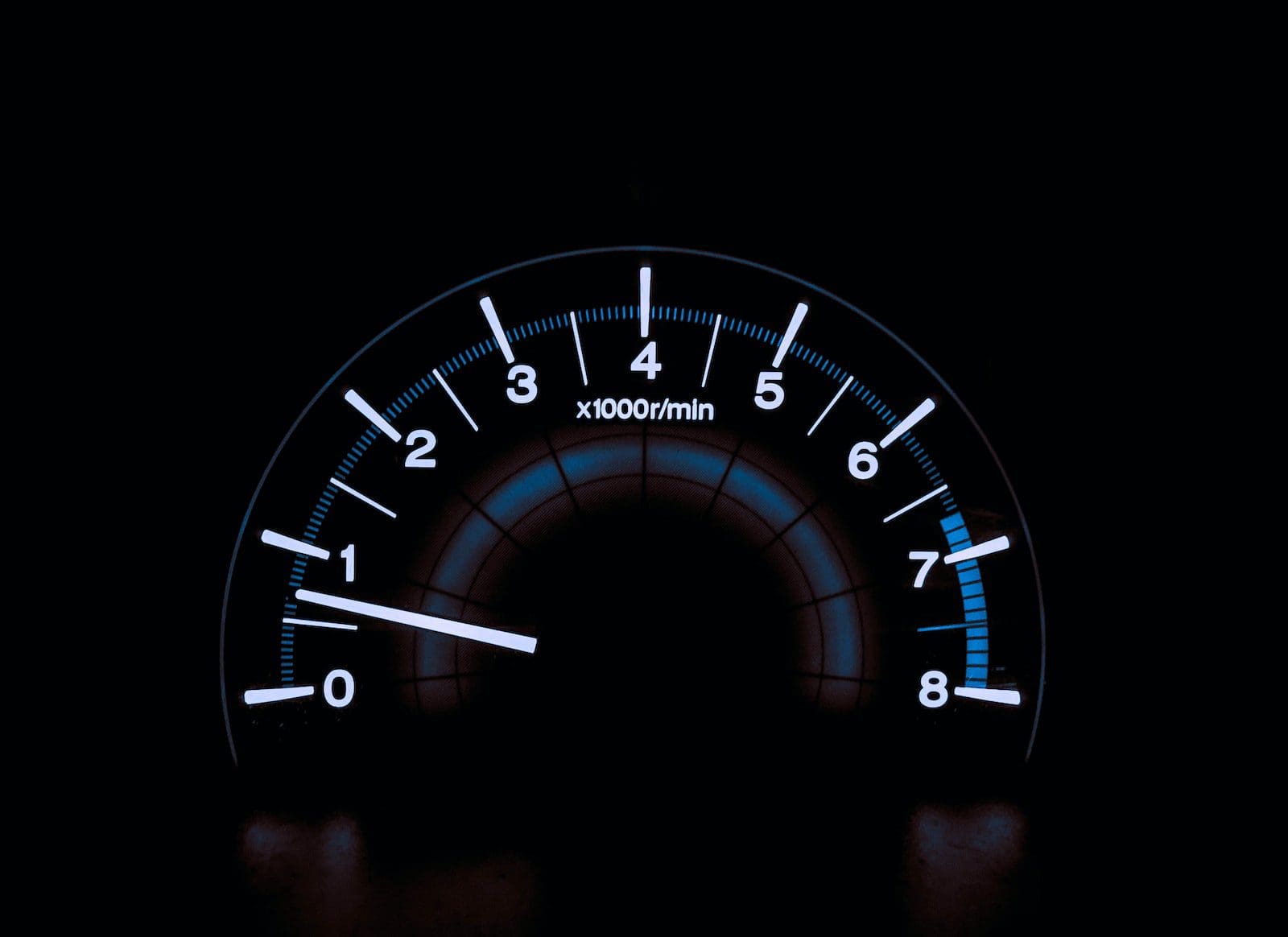Kinematics is the branch of science which deals with the cause of the motion of any object. Kinematics is also referred to as the geometry of objects. It is an important branch of physics. It deals with the forces, motions, etc., which cause an object to move, rotate, oscillate, etc., from its place.
Key Takeaways
- Average speed is the total distance travelled divided by the total time taken, while instantaneous speed is the speed at any given moment.
- Average speed is a measure of overall speed during a journey, while instantaneous speed is the speed at a specific point in time.
- Average speed is lower than instantaneous speed unless the speed is constant throughout the journey.
Average Speed vs Instantaneous Speed
Average speed is the distance travelled by an object over a given time interval, divided by the duration of that interval. Instantaneous speed is the rate at which an object moves at a particular moment without considering any distance travelled before or after that moment.

Average Speed is a constant value and is measured by calculating the speed of an entire trip or journey. For a journey, the body or an object doesn’t need to remain at the average speed.
Sometimes, it may have more value than the average speed or less value than the average speed depending on the path and hurdles.
Instantaneous speed is not constant for an object or a body. And it is measured with the help of the vehicle-installed speedometer. The speedometer tells the exact accurate value of the speed at that particular instant of time.
The value of the instantaneous speed is greater than or equal to zero. Also, instantaneous speed is a scalar quantity.
Comparison Table
| Parameters of Comparison | Average Speed | Instantaneous Speed |
|---|---|---|
| Definition | It is defined as the total distance traveled divided by the total elapsed time. | It is defined as the speed at a particular instant of time. |
| Formula | Total distance / Total time | The distance at that instant / Time at that instant |
| Meaning | Measured by calculating the speed for an entire journey | Measured with the help of a speedometer |
| Constant | It is constant | It is not constant |
| Example | A bike traveling with a speed of 40 miles/hour; thus, the average speed is 40 miles in an hour. | A bike traveling at a certain speed at an instant of time can be given by a speedometer. |
What is Average Speed?
It can be defined as the total distance travelled by the object or a body divided by the total elapsed time. The formula for calculating the average speed is given below –
Average Speed = Total distance travelled by the object / Total time taken by the object.
It can also be measured by calculating the speed of the entire journey or trip. It is believed that the average speed of an object or body is constant.
While travelling in a vehicle, it is quite difficult to keep the vehicle at a constant or uniform value because of the uneven structure of the road’s brakes need to be applied, which slows down the vehicle.
Thus, the body’s speed is not constant, and the distance travelled divided by time gives us the object’s or body’s average speed during that time.
Consider the given example – If a body or an object travels a distance of 100 km in 4 hours, the average speed is 25 Km/hour. It does not mean that the body is moving at the same speed throughout the journey.
When the road is straight, flat, and free, the speed of the vehicle may be above the average speed, but on a curved road, hills, or in a crowded area, the speed may be slower than the average speed value.

What is Instantaneous Speed?
Instantaneous Speed can be defined as the speed of a body or an object at a particular instant in time. The formula for calculating instantaneous speed is given below –
Instantaneous Speed = The distance at an instant / Time at that instant
Instantaneous Speed can be measured with the help of a speedometer and is believed to be never constant. The instantaneous speed of an object or body is always greater than or equal to zero. It is considered a scalar quantity because it does not have a specific direction of motion.
For a uniform motion, instantaneous speed is considered a constant value. But for a particular given time, instantaneous speed is the magnitude of instantaneous velocity at that time. It is a limit of the average speed as the time interval becomes very small.

Main Differences Between Average Speed and Instantaneous Speed
- The average speed of an object or a body is stated as the total distance travelled by the object or a body divided by the total elapsed time, while the Instantaneous Speed of an object or a body can be stated as the speed of an object or a body at a particularly given instant of time.
- The formula for calculating Average speed mathematically is the Total distance covered by the object or body / Total time taken by the body or object, while the formula used to calculate instantaneous speed mathematically is the distance at a given time / Time at that instant.
- The average speed of the object can be measured by calculating the speed of the entire journey, whereas a speedometer helps to calculate the instantaneous speed of a given object or body.
- The average speed of an object is constant, while the Instantaneous speed of an object is not constant.
- An example of Average speed is when a person is moving at a constant speed of 50 miles/hour, as average speed is the rate of change in the speed concerning time; thus, there is no change in the speed; therefore, the average speed is 30 miles per hour while considering an example for Instantaneous speed is that the speed of the object while travelling changes concerning that instant time thus it varies and can be measured by the speedometer.

References
- https://ascelibrary.org/doi/abs/10.1061/(ASCE)0733-947X(2002)128:2(182)
- https://ieeexplore.ieee.org/abstract/document/148453

The article’s explanation of average speed and instantaneous speed is very comprehensive, and the examples provided help to illustrate the concepts effectively.
Absolutely, the clarity and depth of the article’s content contribute to a thorough understanding of average speed and instantaneous speed.
I totally agree, the article’s detailed explanation and examples enhance the understanding of average speed and instantaneous speed.
The article’s detailed explanation and comparison of average speed and instantaneous speed are highly informative, facilitating a clear understanding of these kinematic concepts.
Absolutely, the article’s comprehensive elucidation of average speed and instantaneous speed facilitates a deep comprehension of these kinematic principles.
I agree, the article’s emphasis on clarifying the differences between average speed and instantaneous speed contributes greatly to understanding these concepts.
The article provides a clear explanation of the difference between average speed and instantaneous speed, offering meaningful examples to illustrate the concepts.
Absolutely, the detailed explanation and examples really help to clarify the concepts of average speed and instantaneous speed.
I agree, the examples make it much easier to understand the difference between the two types of speed.
The article’s emphasis on detailing the definitions, formulas, and practical examples of average speed and instantaneous speed greatly facilitates the understanding of these key concepts in kinematics.
Indeed, the article’s comprehensive coverage and illustrative examples enrich our understanding of average speed and instantaneous speed.
The article’s detailed explanation of average speed and instantaneous speed, combined with useful examples, supports a comprehensive understanding of these fundamental concepts in physics.
I agree, the article’s comprehensive treatment of average speed and instantaneous speed enhances our grasp of these fundamental concepts in kinematics.
Absolutely, the article’s detailed explanation and examples provide valuable insight into average speed and instantaneous speed.
The article’s detailed comparison of average speed and instantaneous speed, supported by clear definitions and examples, significantly contributes to the comprehension of these fundamental concepts in kinematics.
Absolutely, the article offers a thorough elucidation of average speed and instantaneous speed, fostering a deep understanding of these kinematic concepts.
I completely agree, the article’s comprehensive coverage and clear examples enhance our understanding of average speed and instantaneous speed.
The article effectively explains the concepts of average speed and instantaneous speed, clarifying the differences between the two with meaningful examples and comprehensive information.
I completely agree, the article’s detailed and well-structured explanation enhances understanding of these fundamental kinematic concepts.
Absolutely, the article provides a thorough understanding of average speed and instantaneous speed through clear definitions and illustrative examples.
The comparison table provides a very useful summary of the key differences between average speed and instantaneous speed, making it easy to understand the distinctions.
Yes, the comparison table is a great addition to the article as it concisely outlines the definitions and formulas for average speed and instantaneous speed.
The article provides a comprehensive explanation of average speed and instantaneous speed, offering valuable insight into the application and significance of these kinematic concepts.
I agree, the article’s in-depth elucidation of average speed and instantaneous speed enriches our understanding of these fundamental concepts in physics.
Absolutely, the article equips readers with a thorough understanding of average speed and instantaneous speed through clear explanations and illustrative examples.
The clarity and depth of the article’s explanation of average speed and instantaneous speed provide a solid foundation for understanding these important concepts in kinematics.
Absolutely, the article’s thorough coverage of average speed and instantaneous speed enhances understanding of these crucial concepts in kinematics.
Indeed, the article’s detailed explanation and examples greatly assist in comprehending the fundamental concepts of average speed and instantaneous speed.